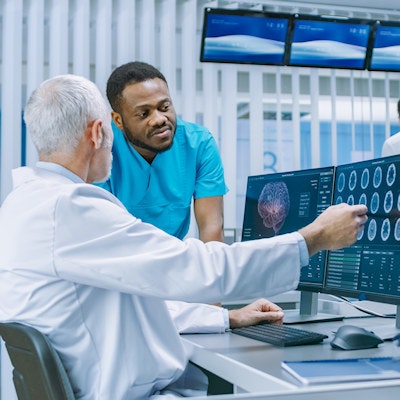
Radiologists can employ several strategies to promote sustainable population health, according to a report published July 24 in the Journal of the American College of Radiology.
These approaches include addressing societal barriers and promoting more equitable access to medical imaging, according to a group of radiology experts led by Priscilla Slanetz, MD, from Boston University Medical Center in Massachusetts.
"Whether it be through educating the next generation, delving into population health-related research, or stepping up to become an active advocate, radiology is primed to be a leader in population health and the future of our profession depends on it," Slanetz and colleagues wrote.
Previous radiological research indicates that the COVID-19 pandemic exacerbated already-present health disparities among different socioeconomic populations. It also renewed interest in the medical community for improving overall population health.
However, Slanetz and co-authors wrote that approaches to public health have to take several factors into account, including social determinants of health, lifestyle and health-related behaviors, community engagement, and integrated care delivery.
Co-authors in this report -- including Jeffrey Jarvik, MD, of the University of Washington in Seattle; Janet Bailey, MD, of the University of Michigan; and Geraldine McGinty, MD, of Weill Cornell Medicine in New York -- listed ways that radiology leaders can strategize for such efforts:
- Healthy People 2030 initiative: An effort from the U.S. Department of Health and Human Services, this initiative emphasizes health equity and reducing health disparities. Outcomes are also listed. A similar program based in the UK is the Health Index. The authors wrote that radiologists should ask questions that connect interventions with health determinants.
- Education: The Accreditation Council for Graduate Medical Education (ACGME) requires goals for residency programs to address health disparities and population health through several ways. These include curriculum, effort by programs directors and faculty, scholarships, and quality improvement.
- Recruitment: The authors also suggested that evidence-based resources should be provided for better access to care, with residents being involved. "As faculty members, we accommodate travel, disability, mental health challenges, and more to increase access to imaging, modeling compassion," they wrote.
- Near- and long-term focus: This includes building relationships with elected officials who vote on issues related to imaging access, evolving payment policy to keep up with advancements in imaging technologies and knowledge, and becoming members of radiologic societies to strengthen their voice in such matters.
The researchers also advocated for interdisciplinary work with colleagues in other medical departments.
"Only by working together with our non-radiology colleagues can we as radiologists have the greatest impact on improving the well-being of all patients," they wrote.
They added that imaging data is a "rich untapped resource," and that machine learning and AI could help radiologists discover new, innovative approaches to tackling healthcare disparities.
The full report can be found here.




















